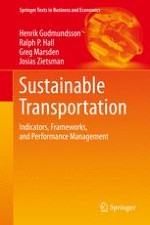This textbook provides an introduction to the concept of sustainability in the context of transportation planning, management, and decision-making. The book is divided into two parts. In the first part, indicators and frameworks for measuring sustainable development in the transportation sector are developed. In the second, the authors analyze actual planning and decision-making in transportation agencies in a variety of governance settings. This analysis of real-world case studies demonstrates the benefits and limitations of current approaches to sustainable development in transportation. The book concludes with a discussion on how to make sustainability count in transportation decision-making and practice.
